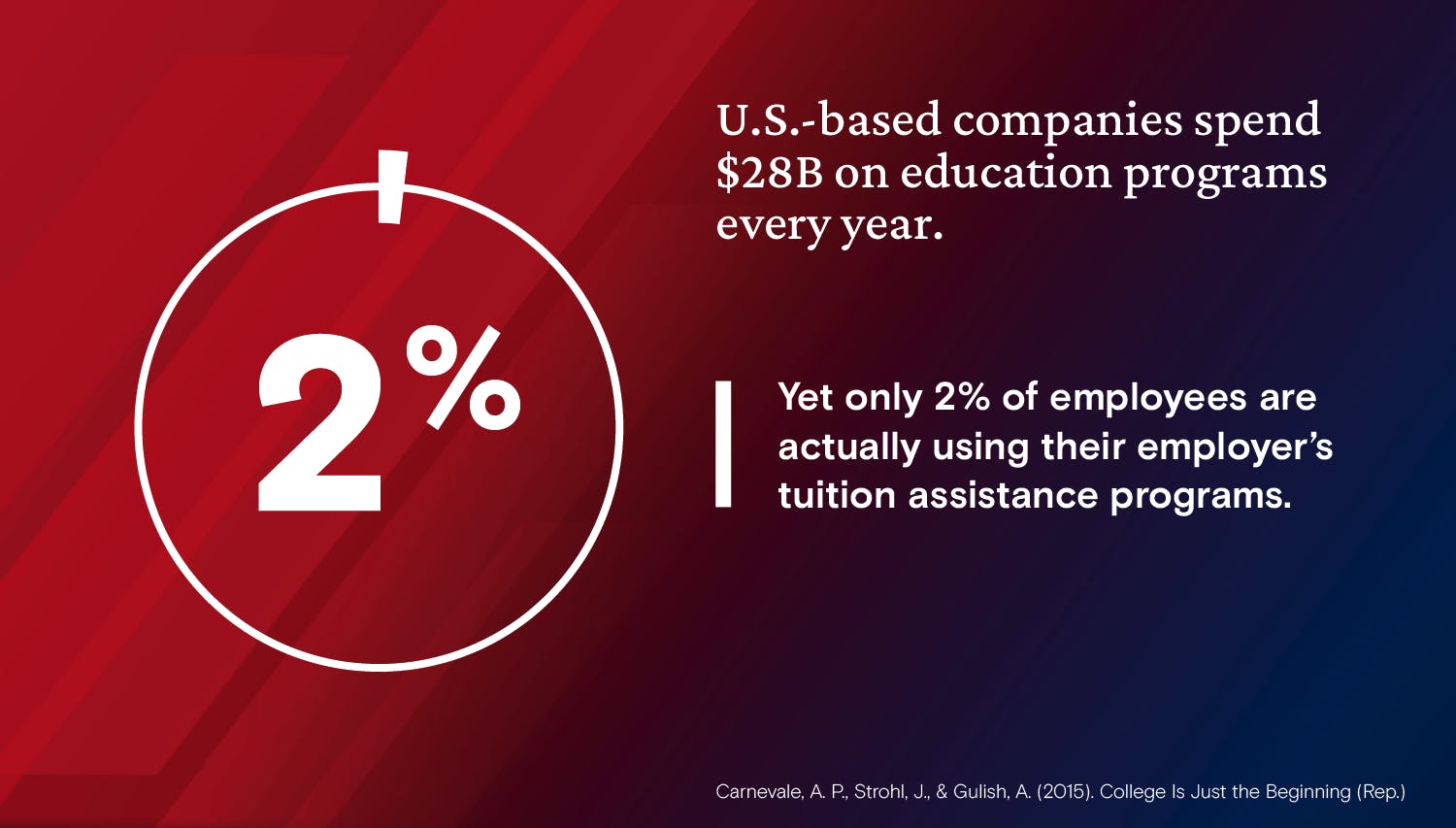There's accelerated demand for new skills across all industries, which has prompted employee concerns about skill-building — 55% reported more stressed, 41% said it takes them longer to finish work now and 22% admitted their work standard has lowered. This impacts productivity, performance and ultimately, the success of a business.
For these reasons and more, companies need to invest more strategically in talent development.
Powerul talent development statistics to be aware of
Here are some key statistics that every HR leader needs to consider when developing and implementing their talent development strategy.
- U.S. corporations spend nearly $180 billion annually on formal training and talent development, $28 billion of which is tuition reimbursement. However, only 2% of employees are actually using their employer’s tuition assistance programs. (The Georgetown University Center on Education and the Workforce)

- 88% of c-suite executives believe providing employees access to education is a critical part of their organization’s business strategy, and 80% will continue their investment for the 2020-2021 academic year. (InStride/Bain & Co.)
- 64% of learning and development professionals say that reskilling their current workforce to fill skills gaps is more of a priority now in a post-COVID-19 world. (Linkedin)

- More than one-third of workers feel less confident they have the skills to do their jobs well (compared to pre-pandemic). Almost half (46%) predict their current skills "will die out" in the next few years. Another 46% of global workers said if their employers didn't offer them opportunities to upskill, they were likely to leave their job. (Degreed)
- 72% of business leaders believe curated degree and certificate learning programs specific to their company’s strategic goals will drive business growth. (InStride/Bain & Co.)
- World-class companies are more likely to make investments in creating career paths and challenging opportunities for employees, developing leaders and succession planning and recruiting hard-to-find skill sets. (Deloitte)
- 96% of c-suite Fortune 500 CEOs report interest in understanding the investments and impact of their company’s learning and development initiatives. (ROI Institute)
- “Jobs for life” are rapidly on the decline. 20% of Americans would prefer to work in a different industry altogether by 2030. (FutureLearn)
- 34% of surveyed workers are satisfied with the level of skills development investment received from their organization and only 56% of respondents see a meaningful opportunity for themselves in the organization. (MIT Sloan Management Review and Deloitte)
- 47% of employees say their extra training and education helped them advance within their current company. (Pew Research)
Employee professional development is key to growth
There’s no question that the talent development landscape continues to evolve. These statistics illustrate that point. However, amid employees’ increased concern about their skill sets and the rise of new opportunity gaps, the value of investing in a talent development strategy and workplace education remains the same — building a stronger workforce and enriching the lives of your employees.
Discover more talent development content: Need to take quick action on employee skill-building? Here's a guide on how to fast-track employee skills development.

